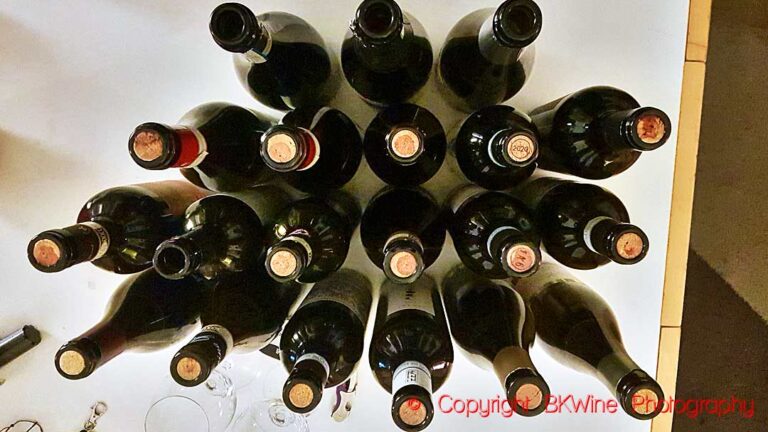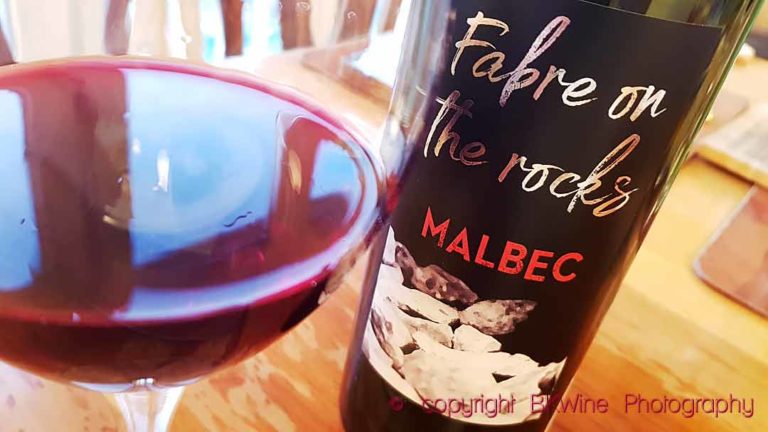Recommendations from an ambitious importer’s selection
For a wine enthusiast, it is important to keep an eye on what the various importers have to offer. It is with the ambitious importers that you will find exciting wines, such as the importer Handpicked Wines. The big grocery chains selection is often largely populated by moderately exciting volume wines. (Especially in a country like Sweden where there is a – curious – monopoly.) When Handpicked Wines recently made a presentation of their selection, BKWine Magazine’s reporter Carl-Erik Kanne was there. Here you get his best tips and recommendations.
As a writer and commentator one should not promote any individual producer or importer, but in the case of Handpicked you are almost prepared to make exceptions.
When they recently presented a selection of their wines they had a professionally made catalogue with good space to make notes, and many skilled staff from Handpicked prepared to assist with questions. Everything contributed to the fact that the experience more than lived up to previous years’ tastings. About 200 wines, some grappa, and a table with rum were to be tasted. Most wines were from smaller and well-chosen producers from the big wine countries and some smaller ones.
My focus on the red side was on new things from pinot noir and there were some worth mentioning from Germany, Oregon and New Zealand.
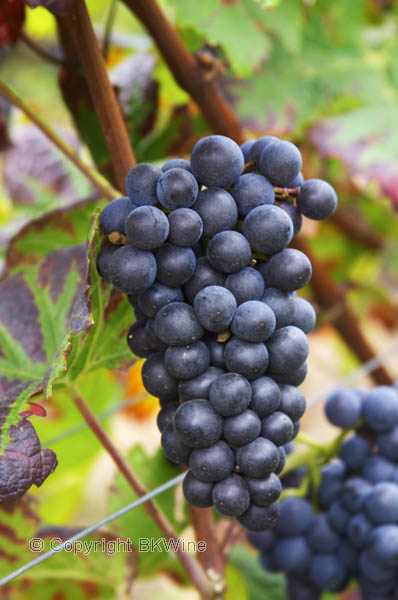
Some other red grapes in my sphere of interest were nebbiolo and aglianico that were well represented.
On the white side, I was pleased to note a white non-sparling vouvray, Vouvray Le Marigny 2015, was present. Nice nose of pears, citrus and good acidity and pure fruit with a taste of pears and yellow plums that balance well against the careful barrel ageing of 10 months. There was also an excellent dry crémant with fresh acidity, Vouvray Brut Fines Bulles from the same producer, namely Domaine des Aubuisières. The winemaker here, Bernard Fouquet, works as sustainably as possible by harvesting by hand and by vinifying separately to maintain as much of the origin of the limestone soil as possible in the wines.
These wines from chenin blanc age gracefully and it may, therefore, be a good idea to put a case in the cellar for future enjoyment with, for example, chicken and tasty fish dishes.
Also from the Loire, but its estuary, came an interesting organic muscadet with more fruit and less acidity than usual. Therefore, it was perceived as a wine with wider use than as an aperitif and shellfish wine, Muscadet Sèvre et Maine sur le Chemin des Prières 2017. The winemaker is Jérémie Huchet who is the 4th generation at Domaine de la Chauvinière and who is on his way to become organic. The wine was unfiltered.
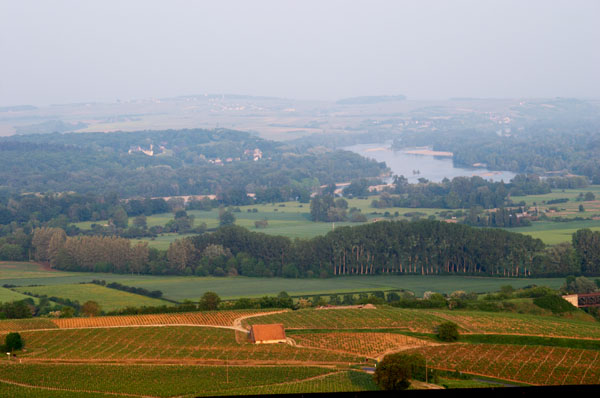
To continue the white track, assyrtiko and aidani are two Greek grape varieties from mainly Santorini, an island in the Cyclades, a Greek archipelago north of Crete.
The soil in Santorini is mainly volcanic and poor so the roots of the vine need to go deep down for nutrition. The wine louse does not like this soil, so a large proportion of the vines are ungrafted and can be very old. Assyrtiko is indigenous to Santorini for more than 2000 years and one of the best quality grapes in Greece. As the island is very exposed to wind and strong sun, a special pruning method in basket shape is used to protect the grapes. The variety is ideal for the area as it both develops optimal fruit maturity and retains the acidity. The wines, therefore, get high acidity and good minerality. Assyrtiko oxidizes rapidly, which is used in the production of sweet wines (vinsanto). The grapes are also often the base wines in cuvées with, for example, aidano, another domestic grape, less expressive.
I tasted Assyrtiko Argyros 2016 which was a well-made dry representative for wine made on assyrtiko.
The producer, Estate Argyros Winery, is family owned since 4 generations and covers about 65 hectares. Combining old craftsmanship with modern equipment, harvesting by hand and avoiding new oak barrels, everything to maximize the character of the grape.
If we follow the Greek trail to Italy, we encounter in Campania the white grape greco and the red aglianico, which emigrated Greeks brought here about 2,500 years ago. The Greek immigration occurred throughout southern Italy in several waves, but for the two grapes in question Campania, Basilica and Molise were the regions that had the best growing conditions, so the grapes are still here today. Both are considered to be of high quality.
Greco may have some “surnames” attached to name to indicate where it comes from. One such village is Tufo in Campania (greco di tufo). Wines from the grape are dry, have moderate acidity and are tasty. The grape is used today in many white wines to provide body. Very good as a food wine, to tastier fish dishes, chicken and the like.
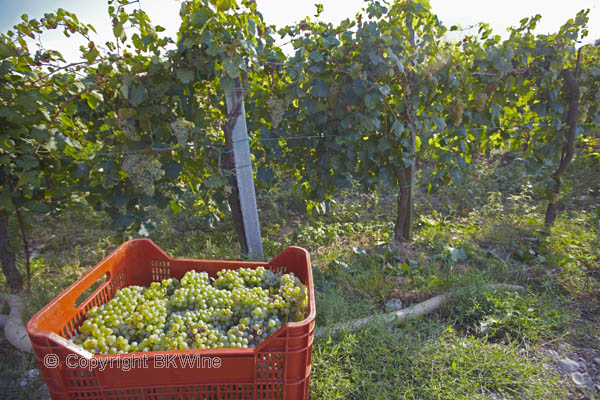
From the producer Azienda Agricola San Salvatore 1988 there was a wine with good grape typicity and biodynamically certified, Calpazio Paestum Greco 2016 made from 100% greco, hand-picked and fermented with natural yeast in steel tanks. There were hints of citrus, full-bodied pure fruit and long aftertaste.
The wine comes from the historical land Paestum and is an IGP Paestum Greco.
From the same producer and the same area, there was a wine made from the red aglianico grape, Corieto Paestum Aglianico 2015, with dark red colour, moderate acidity and good fruit and, despite its youth, more moderate tannins than what is usual for the grape.
Aglianico is one of southern Italy’s quality grapes. During Roman times, it was the main ingredient in the Falernum wine. The grapes thrive best in the area of Taurasi in Campania, which has a perfect microclimate with hot days and cooler nights, but also in Vulture in Basilicata makes very good versions. Wines from these two areas are DOCG classified.
The wines from these main areas are usually dark in colour, packed with dark fruit with cherry tones and very rich in tannins. They resemble Barolo a lot, the wine from Piedmont, and, like these, the wines become softer with some ageing and can be very nice and complex. If you want to drink them young, then decant it a long time in advance.
The star producer of both Aglianico and Greco di Tufo is Mastroberardino in Campania, who was one of the pioneers when it came to restoring the status of these two grapes.
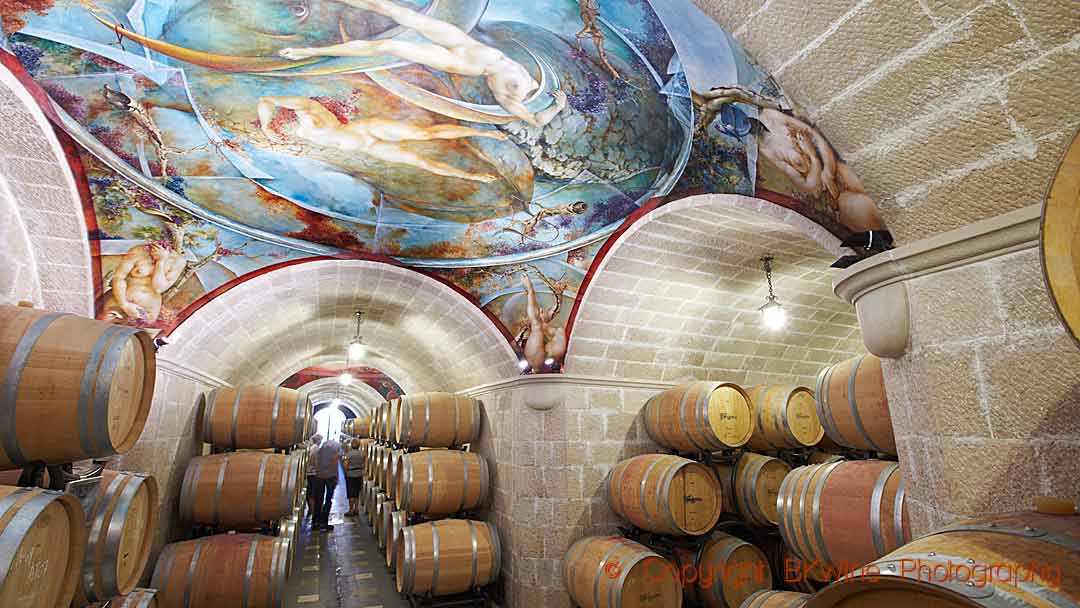
At Handpicked’s tasting, there were also two aglianico del vulture wines from the producer Luciana di Piccin Fabrizio. The first, Gricos Aglianico del Vulture 2015 DOC, was grape-typical with good acidity and dark fruit and nice texture and must be considered to be very affordable. The second wine was Damaschito Aglianico del Vulture 2013 DOC was a notch more powerful in all respects.
Both wines are organic and, after some major successes in Tuscany, the producer has sought a calmer environment and at the same time the challenge of developing the potential of the aglianico variety in a sustainable way.
The comparison between Aglianico and Nebbiolo from Piedmont is interesting and if one wanted to explore the latter variety there were a lot of good wines to try.
Azienda Agricola Gagliasso had two wines from 2014 that felt very young. Especially Tre Utin was very promising but requiring a bit of ageing.
Bruna Grimaldi’s Camilla Barolo 204 was also young, but very promising with good acidity, pure fruit and distinctive tannins that gave a clear structure to the wine.
Bruna Grimaldi is a family company with about 10 hectares under vines with tradition and durability as guiding stars. The ageing is traditionally done in large old oak barrels in a newly renovated wine cellar.
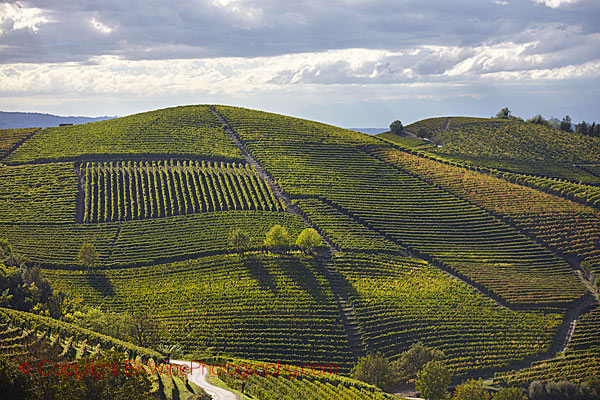
A positive trend in Piedmont and neighbouring areas is that many wineries strive to make some more early-drinking wines from the nebbiolo grape, different than the traditional wines of Barolo and Barbaresco.
One example was Severina Coste della Sesia from 2015, which was grape-typical with floral fragrance, a taste of red berries and tannins for a good structure. The winemaker, Pietro Cassina, works sustainably at all stages with his 6 ha vineyards.
If you are in Piedmont, do not forget that there are also wines made on white local grape varieties, such as arneis and moscato d’asti. The latter is a sparkling sweet wine of low alcoholic strength, perfect for various lighter desserts.
From Piedmont, I made a big jump to New Zealand and the producer Greywacke or actually the winemaker and the photographer Kevin Judd. He produces mainly Sauvignon Blanc, in two styles, as well as Pinot Noir. Most interesting was the Wild Sauvignon Blanc 2015. “Wild” means the wine was fermented with natural yeast, and the wine has fermented in French oak barrels. The was made in barrels and some of the wine has done the malolactic fermentation. Finally, it has been kept on its lees in stainless steel vats.
What is the result? A wine with good acidity, tropical fruits and oak flavours, all in good balance. An untypical sauvignon blanc that also works well with more elaborate fish dishes.
Greywacke Pinot Noir 2014 had a relatively dark colour, a character of ripe red berries with spicy ingredients and good acidity. Very well-made. It goes well both with birds and fish.
The grapes are handpicked and hand sorted and fermented in open vats with natural yeast. Aged 16 months on partially new French oak barrels.
Chardonnay 2014 from the same producer was a nice chardonnay in Chablis style with fresh acidity and buttery fruit. They also make wines from pinot gris and riesling.
A wine reminiscent of Pinot Noir from New Zealand is Pinot Noir from Oregon in the United States. The family-owned Sokol Blosser Winery with the winemaker Russ Rossner is a typical example of a young, talented Oregon producer who works small-scale and sustainable. (Sokol Blosser is organically certified according to USDA).
Most are in the area of Willamette Valley, which was the origin and the centre of the young wine production in Oregon since the 1970s.
Oregon has the perfect conditions for growing grapes that want hot days with cool nights. Therefore, pinot noir and pinot gris are the most grown with over 60% and 13% of the area in 2016.
In 2017 there were 18 wine regions in Oregon, so-called AVAs (AVA stands for the American Viticultural Area, similar to AOP in the EU). The number is increasing as existing areas are divided into sub-areas.
In Oregon today there are about 700 producers. The planted acreage is about 12 000 hectares, which is less than half of that in Burgundy.
From Sokol Blosser, there was a Willamette Valley Pinot Noir 2015 which had aromas of red berries with elements of herbs. The wine was balanced with high acidity, red fruits and balanced barrel tones. The wine was aged for 16 months partially in new French oak barrels.
The second wine, Dundee Hills Pinot Noir 2015 was a size bigger in depth and intensity but had a slim and elegant acidity and fruit and long aftertaste. I have tasted the same wine from 2014, which was a warmer year, and it did not have the same elegance.
Both wines were very good examples of Pinot Noir from Oregon. In conclusion, the wines from here feel like an intermediate between Burgundy and California. There is some warm fruit, like in California, with the acidity and earthiness from Burgundy.
A few more Oregon producers I’d like to mention, worth trying, are the pioneers Ponzi, Cristom, or Bergstrom.
This time, I did not taste the wines from Washington State, just north of Oregon, that has good conditions for growing grapes that are like a warmer climate than Oregon’s Willamette Valley, mainly in the Columbia River Valley.
The famous winemaker Charles Smith was well represented with his well-made and powerful wines.
Instead, I tried some pinot noir from California to compare with those from Oregon. From the producer Birichino there were the Pinot Noir Saint Georges 2016 and the Pinot Noir Lilo Vineyard 2013. The first was typically light-coloured, red berries and a good acidity on the nose and on the palate. A balanced wine, burgundy-like in style. The wine was made from grapes from 4 different vineyards in the Santa Cruz Mountains, was fermented with natural yeast in stainless steel tanks, aged in cement tanks and neutral barrels and bottled unfiltered.
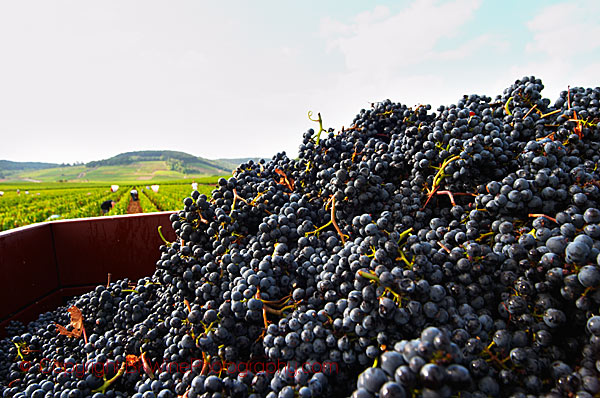
The second wine was made from grapes exclusively from the vineyard called Lilo, located at 300 m altitude, just above the limit of the fog from the sea, on a south-facing slope of the Santa Cruz Mountains. Ideal microclimate for pinot noir, but also with most of the things that make pinot noir hard to grow. The grapes are handpicked, maceration takes place partly with whole clusters, and the fermentation was mostly done with natural yeast in stainless steel tanks, and a smaller part in oak barrels. The wine was aged in neutral French oak for 12 months and bottled unfiltered. The wine was had an unusually strong colour for pinot noir, a nose of cherry, roses and a concentrated taste of red berries and cherries, with herbaceous notes. Soft tannins and pleasant aftertaste. I also tried a grenache from the same producer that had a good acidity and texture and had a bit more bite in the taste that grenache usually has. Birichino Grenache Besson Vineyard 2016.
The name Birichino should be interpreted as someone who is a bit naughty or unruly and it is the companions Alex Krause and John Locke who in this way want to express a willingness to be a little different. They want to make grape-typical wines from old vines and use natural yeast and let the wine be unfiltered. They have also focused (like Charles Smith in Washington) on making their labels distinctive, not least through motives that reflect the name of the wine.
From the producer Lioco in Santa Rosa (Sonoma), I tried the Laguna Pinot Noir 2015, which, despite its youth, showed an intense nose of red berries and a taste of slightly acidic strawberries and raspberries. Long aftertaste. A well-crafted wine.
What could be better than finishing my tasting round with pinot noir from Europe and from the German Ahr region that has a lot of slate soil? There were some really nice wines from the young winemaker Julia Bertram, a fast-rising star from the area, with family-owned vineyards with old vines.
She is driven by the same commitment as many Oregon winemakers to simplicity in the cultivation and in winemaking. Handwerk Spätburgunder 2016 is the entry-level wine in a trio of wines from Julia. It is typical for the variety with a fine nose of raspberry and lingonberry and a refreshing taste of red berries and balanced tannins. The wine is made from grapes from young vines that are handpicked and carefully handled. Fermentation is with natural yeast on large old oak barrels.
Another wine I tasted was the Ahrweiler Spätburgunder 2016. The grapes come from three different plots with old vines (25 years old). Hand picking and gentle pressing as well as fermentation with natural yeast in large old barrels. Then aged in the same barrels. Unfiltered bottling.
It was a well-structured Spätburgunder with a good balance, medium acidity, warm ripe fruit and tannins.
In summary, the wines from Handpicked’s range were excellent examples of how much more interesting and individual wines from small-scale producers compared to the wines produced in large-scale production plants with streamlined styles.
Carl-Erik Kanne is a long time wine enthusiast and fervent wine taster. He reports from wine tastings and wine events in Stockholm for BKWine Magazine.


